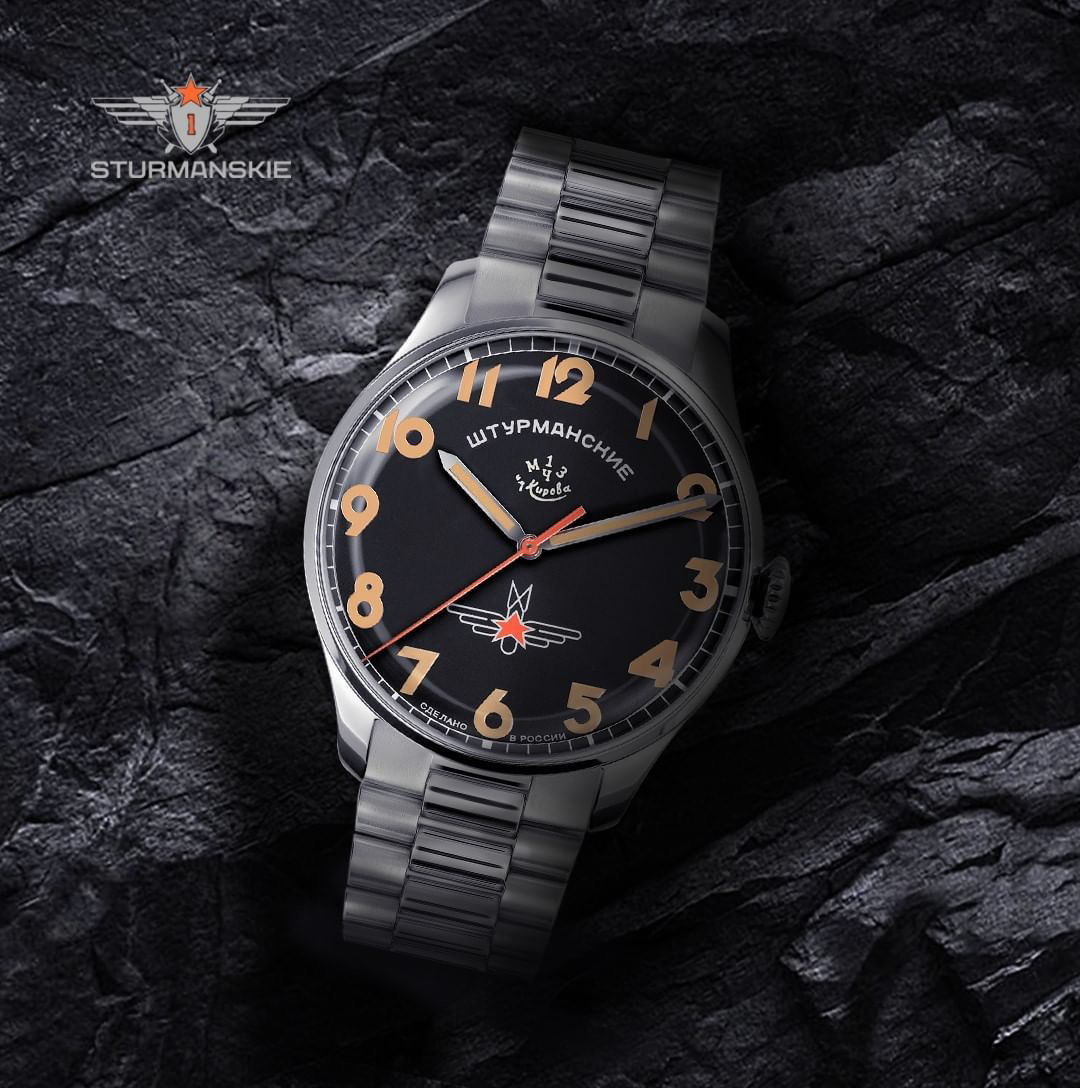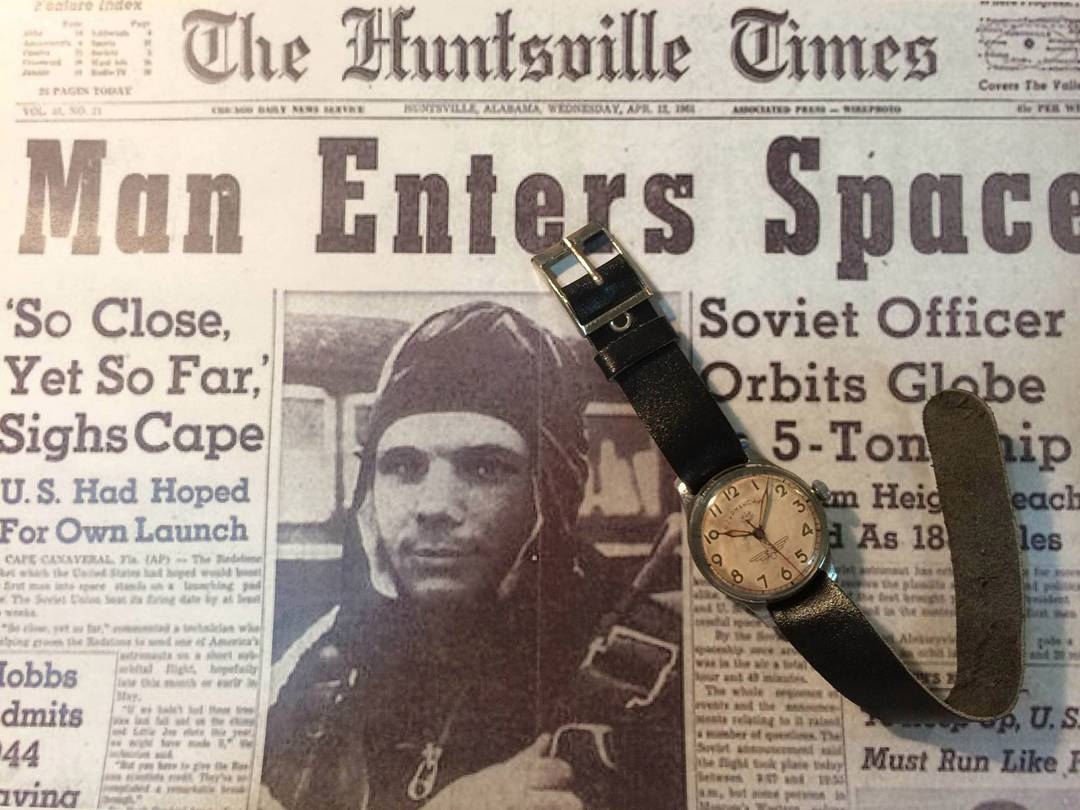It was 62 years ago when humankind took a giant leap and reached space. Inside the spaceship Vostok 1 was Russian cosmonaut Yuri Gagarin, who became the ‘first man in space’, wearing a watch that is now known as the ‘first watch in space’. Developed by the First Moscow Watch Factory (FMWF), the watch, Sturmanskie, took its first flight in space on April 12,1961, when Gagarin, as part of the Vostok 1, the first-ever crewed space mission, went into space with the watch sewn on the left arm of his spacesuit.
When it comes to space, the Omega Moonwatch is often the first watch that comes to mind—Edwin ‘Buzz’ Aldrin wore it when he stepped out of Apollo 11 onto the lunar surface in 1969. But the Russians had won the Space Race already, when in 1961 Soviet pilot Yuri Gagarin spent 108 minutes in orbit, making a full circle around the earth in Vostok 1. To further clear the air, four years later, a white Strela was worn in open space (outside a spaceship) by Russian Cosmonaut Alexei Leonov.
So how did the first watch in space, a Sturmanskie Type 2, come to be? Back in 1930, the Soviet army needed watches in bulk that were accurate and reliable for the Great Patriotic War, the Eastern Front of World War II, fought from mid-1941 to 1945, primarily between the Soviet Union and Nazi Germany. Timepieces being important tools on the battlefield, after the war, the watch industry in the Soviet region started to develop, and the First Moscow Watch Factory was set up in the year 1943 (the factory was first established as the First State Watch Factory in 1930 under orders from Joseph Stalin) and given the task of producing watches for pilots and navigators in the military. These watches were expected to be high in precision and able to withstand G-force, while also being reliable and comfortable.
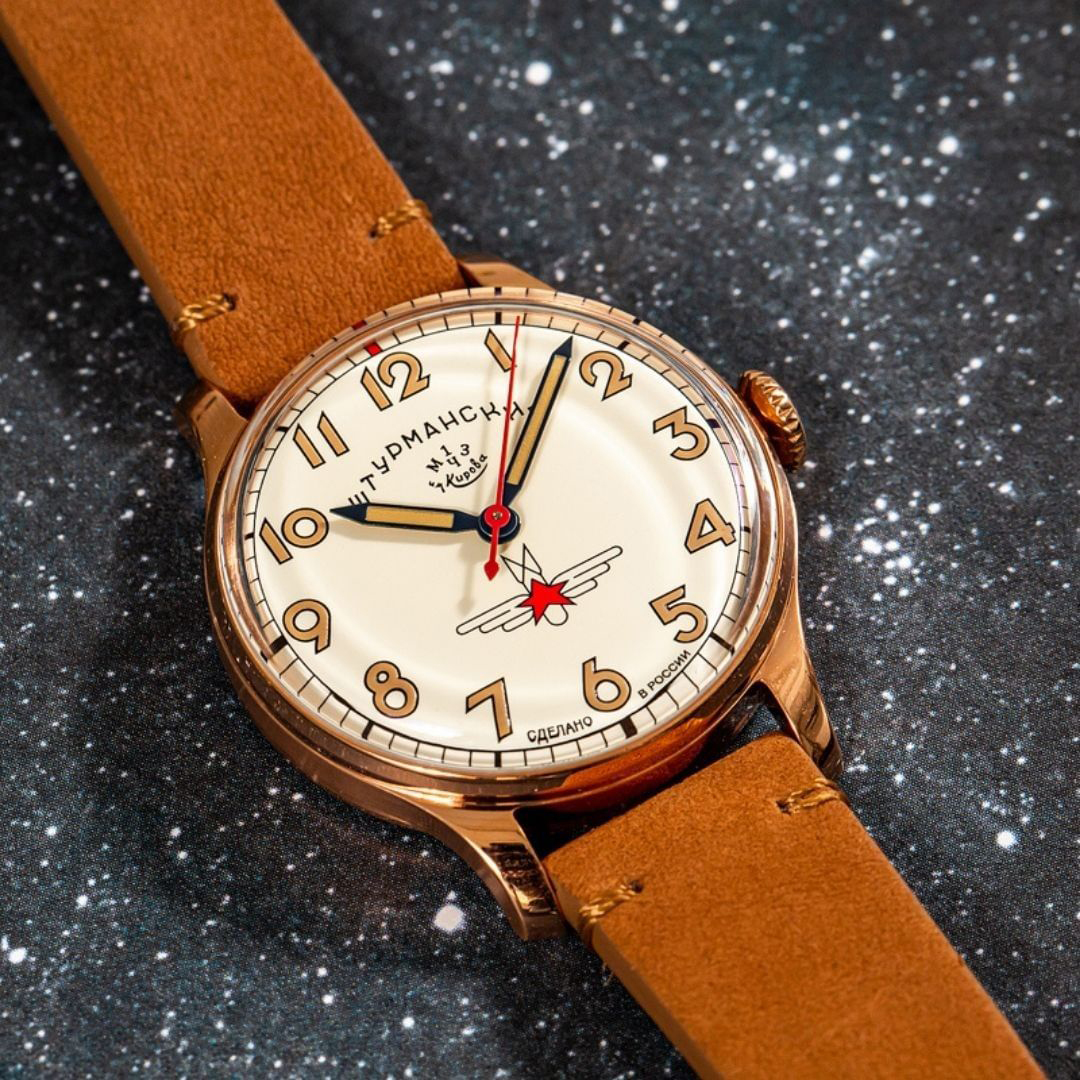 Gagarin the First watch
Gagarin the First watch In 1949, a model was released, called the Type 1, which met these criteria and became the first Sturmanskie, meaning ‘navigators’ in Russian. It was a 33mm simple and compact chrome-plated, brass-cased watch with plexiglass crystal and large numerals on the dial that made it easy to read. The dial also featured the words “Штурманские, МЧЗ им. Кирова” meaning ‘Sturmanskie, 1st Kirov Moscow Watch Factory’; it was the name of the manufacturer, and had a red star logo at the centre, similar to the monogram of the Soviet Air Force. It had a central seconds hand, with the indexes and arrows of the hands filled with radium-based lume, which also made it possible to identify the original pieces using a dosimeter, an instrument used to measure ionising radiation levels.
The watch was neither shockproof nor waterproof, but it had a useful feature for the navigators and pilots—the seconds hand could be stopped by pulling the crown out fully, which helped synchronise time with fellow pilots while doing certain tasks together.
Yuri Gagarin’s Watch
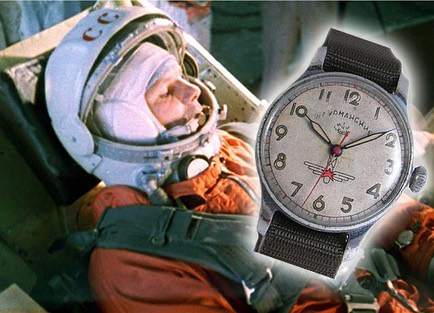 Gagarin Heritage 42 watch
Gagarin Heritage 42 watch
Gagarin was a Soviet, and it was natural that he would wear a Soviet watch on his and mankind’s first expedition to space. The watches manufactured by First Moscow Watch Factory were not intended and made for the general public or the servicemen either. These were issued as a tool to those who graduated from military flight schools along with their diplomas. The watch had to be returned after the end of their service; some were allowed to keep theirs on the basis of merit. In 1957, Gagarin graduated from Orenburg military flight school with honours and received his Sturmanskie there. This was the Type 2.
Two years later, Gagarin was among the 3,500 who volunteered for the cosmonaut candidates’ squad; he made it to the first manned flight to space and wore this very Sturmanskie watch.
The Type 1 and Type 2 Sturmanskie
It was in 1935-1936 when the USSR signed a deal to buy designs, equipment, and production rights of many movements from the French watchmaker LIP SA d’Horlogerie. These movements therefore became the forefathers of several Soviet watch movements after the war, such as the French R-26, which was used to make the Soviet K-26 movement that powered the Pobeda watch, a Russian brand (named so by Joseph Stalin, who ordered its bulk manufacture for the first year of the victory celebrations of the Great Patriotic War). This same movement was then used to drive the Type 1 Sturmanskie with some upgrades. It had 15 jewels and a considerable power reserve.
 Sturmanskie Type 2
Sturmanskie Type 2
The USSR started to enhance its jet aviation and thus needed instruments, including timekeeping ones, which could withstand greater loads. In 1954, the First Moscow Watch Factory upgraded the Type 1 Sturmanskie watch to meet their requirements, and so the Type 2 was put into production. This new model had the same 33mm case as that of the Type 1 but with major updates.
One of the prominent differences was seen in the hands and the crown. Type 1 had baton hands and Type 2 had pointed leaf hands with a long needle. The mushroom-shaped crown was replaced by a raised washer-shaped crown, which had an extra sealing to withstand abrupt pressure changes. The junctions of the case parts were now sealed with gaskets. It had a shock absorber at the balance axis and was dust- and water-resistant with its screwed-in back cover.
The Type 1 and Type 2 are easily identifiable, even though these were not their official names—they were always called the Sturmanskie. The other differences lay in their movements.
The movement
The Type 2 with its updated design also had an improved calibre. Equipped with Caliber 43M with a 34-hour power reserve and a daily deviation of +/-30 seconds, the movement was based on Soviet Caliber 2609, a manual wound, with 17 jewels and a 38-hour reserve. Côtes de Genève adorned the movement with the inscriptions ‘17 камней’ or ‘17 rubies’ and ‘Первый МЧЗ’ or ‘First Moscow Watch Factory’. The inscriptions for dust-proof, shock-proof, and moisture-protection were also present on the caseback.
The Return to Earth
The Sturmanskie Type 2 that Gagarin wore was tested for seven years by pilots including Gagarin. Therefore, he knew the reliability of the watch. However, it was not the only watch that he took to space, though the identity of the other is uncertain. For Sturmanskie, its presence was proven from an excerpt from Gagarin’s interview with Pravda newspaper from April 14, 1961, which stated:
Pravda: “By the way, what did you use to monitor the time?”
Gagarin: “This very earthly watch,” Yuri rolled up the sleeve of his jacket and showed an ordinary navigator’s watch produced by the First Moscow
Watch Factory.
Pravda: “How has it withstood space?”
Gagarin: “It’s still as true as new!”
The watch certainly came back to earth in perfect condition, and today can be seen at the museum at the Cosmonaut Training Center in Moscow. Gagarin gave it as a present to Marshal Konstantin Vershinin, then Commander-in-Chief of the USSR Air Force, who later became friends with him, as a gesture of gratitude for his faith in him. After Vershinin’s demise, the watch was inherited by his daughter Yelena, who donated it to the museum.
 The caseback engraved with Gagarin’s portrait
The caseback engraved with Gagarin’s portrait
Sturmanskie Watches Today
The successors of the first watch in space are still being produced by the brand Sturmanskie in Russia. And there’s a dedicated collection that pays tribute to the first man in space and his watch, called the Gagarin collection. Its highlight piece is the Gagarin Heritage, a 40mm watch that has preserved many other features of the original Sturmanskie, including the hands, indexes, symbols, and inscriptions. The lume used is phosphorus-based. Crafted in stainless steel, it comes in various dials and a choice of straps; the caseback features a portrait of Yuri Gagarin. The manual-wound Soviet Caliber 2609 drives most watches in the collection, and offers about 30 hours of power reserve. The collection also includes automatic versions, which have the Vostok 2416 movement manufactured by the Russian Vostok Watch Makers.
The other significant collection that is closest to Gagarin’s watch is Gagarin the First. Designed with the same aesthetics, the collection has a 33mm case in stainless steel or rose-gold, PVD-coated stainless steel in ivory and black dial options. Powering the timepieces is the manual winding Poljot 2609, created by the then Russian, now German watchmaker Poljot International (interestingly, Poljot was the name given to all the watches developed by the First Moscow Watch Factory after Yuri Gagarin’s successful space mission). There’s a Gagarin Heritage 42 collection with a case size of 42mm driven by the Vostok 2416 movement. The models are crafted in stainless steel and bear Gagarin’s portrait on the caseback. They come in different dial colours and strap options.
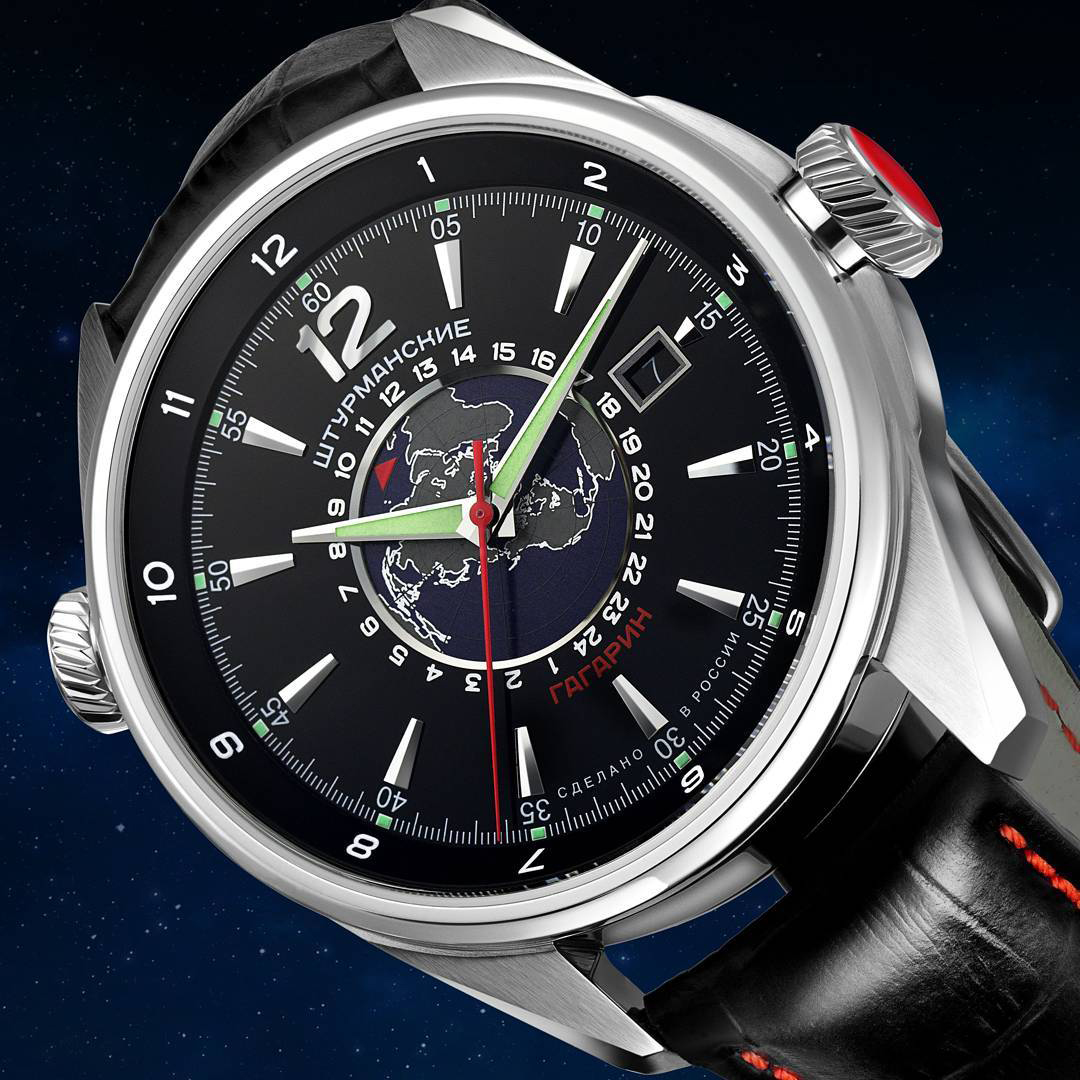 The Gagarin 24 Hours watch
The Gagarin 24 Hours watch
The other collections include Gagarin Classic Automatic, housed with Miyota 9015 movement; Gagarin Day-Night, which is a dual timezone 44mm stainless-steel watch with a date window powered by the Vostok 2432 automatic movement; Gagarin 24 Hours is a 44mm stainless-steel collection and has a dual hour scale and date window, powered by the Vostok 2426 calibre. The others are Gagarin Classic 33 in stainless steel, powered by Poljot 2609, and Gagarin Heritage Classic in 40mm stainless steel.
Two years after Gagarin’s flight, in 1963, Valentina Tereshkova became the ‘first woman in space’ and also wore a Sturmanskie. This legacy of the legendary Yuri Gagarin watch lives on with the timepieces produced by the brand paying tribute to Russia’s space explorations.
Images: Courtesy Brand
This story first appeared in print edition of WatchTime India's Special Issue On Sports Watches 2023.
